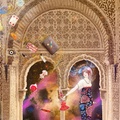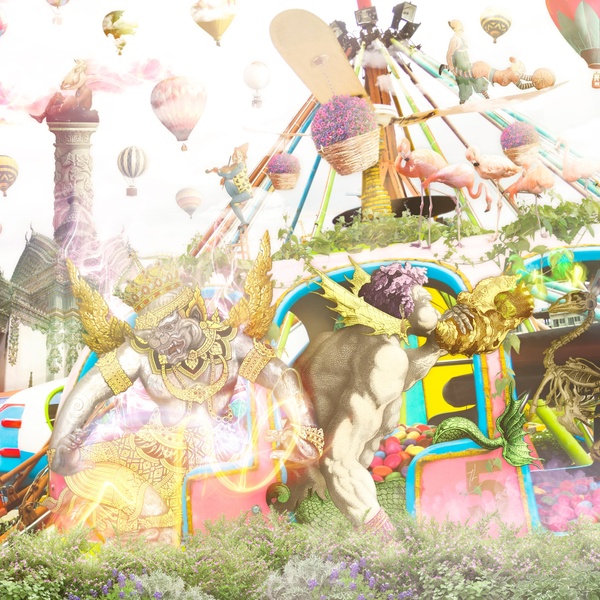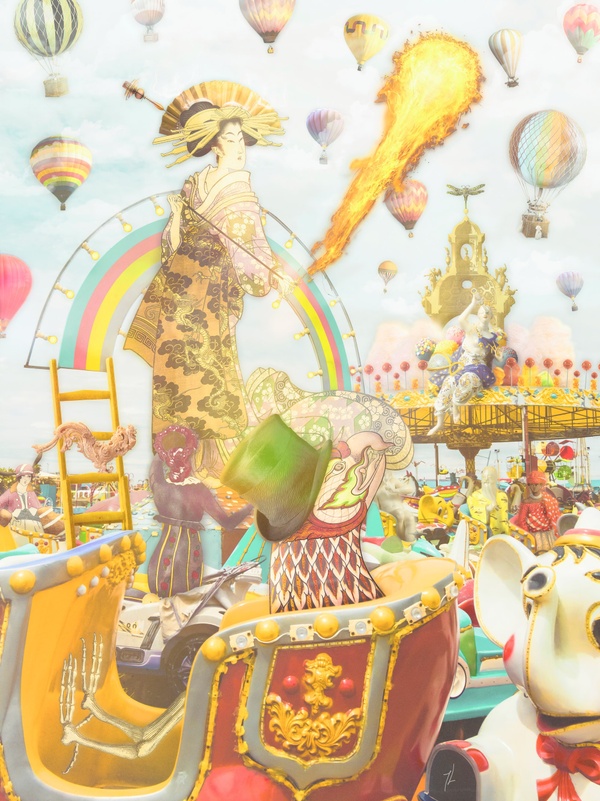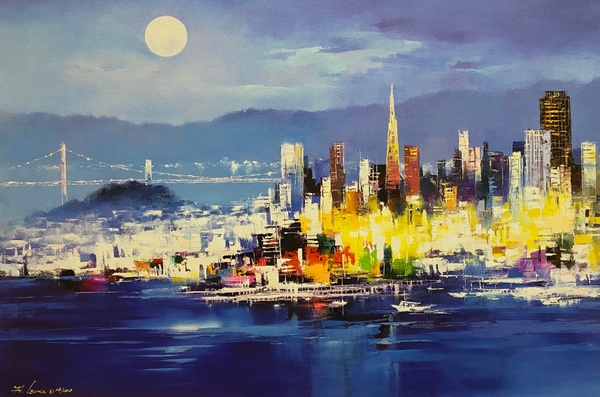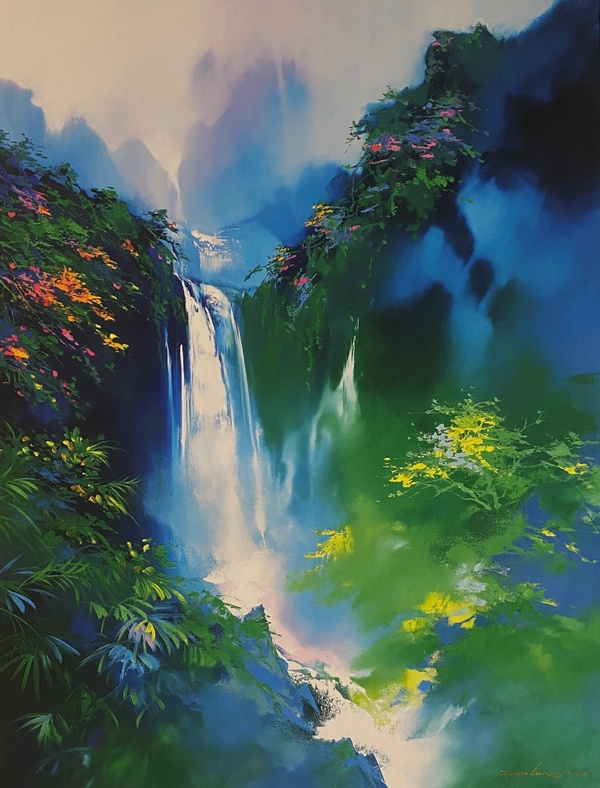
Thea the Space Nymph
Toby Leon
100% digital paper
Original Print, 60.96 x 81.28 x 0.25 cm
Limited Edition of 50
 Offered by
Offered by Toby Leon
Return Policy
15 days money back guarantee
Return Policy Terms
• You're welcome to return or exchange any items in your order — open a return request within 7 days of delivery • All returned items must be delivered back to us within 15 days of delivery in their original condition • Please don’t send anything back before submitting a return request • Feel free to send back your items after we have reviewed and approved your return request • After we receive your returned items, we will notify you that we're satisfied with the condition of the returned item(s) • After we approve your return, you will be refunded via your original payment method within 1 week — includes processing time between our bank and yours
About Toby Leon
We imagine history into existence every day. Shaping the world around us as we go. And I remake histories with every piece. From a motley crew of tales tall and true. A melange of myths, signs and symbols. Every one ripe for my kitsch confections, which could all be legends one day...
Every piece I create is true. Sourced from truth and grounded by it. But never real. Reality's a fiction we're all subscribed to, which doesn't make it any less true. And that's the thing about the truth. Or the past. It moves in both directions. Myriad, in fact. Never sitting still or doing as it's told. Forever questioned, dissected, reframed and upended. Queered and inverted. Packaged and performed. Told, retold, adapted then sold. Evolving, like everything else. Which is why I like to think my art exists outside of time. Reaching for infinity. Not reality. A kaleidoscope of mish-mashed truths, which are only as surreal as we choose to make them...
Toby LeonAbout the Product
In the vast expanse of the cosmos, where the fabric of time and space dance in an eternal ballet, resides Thea, the Space Nymph. She is a celestial being of immense power and wisdom, her existence a testament to the enduring allure of magic and witchcraft. These forces, though maligned and misunderstood for centuries, have never truly disappeared. They persist, challenging the rigid binaries of monotheistic religions with their fluidity and transcendence.
Thea's story is deeply rooted in the rich tapestry of ancient Greek mythology. Known as the Titaness of sight and the shining ether of the bright, blue sky, she is a beacon of light in the vast darkness of the cosmos. Thea is the offspring of Uranus and Gaia, the primordial deities of the sky and the earth, respectively. Alongside her brother and consort, Hyperion, she birthed the sun god Helios, the moon goddess Selene, and the dawn goddess Eos. This lineage underscores her role as the progenitor of light, a symbol of clarity and enlightenment.
Thea's celestial abode, a palace suspended in the cosmos, is a sanctuary free from the moral strictures and conventions of an either-or world. Here, she is not bound by the limitations of earthly existence. Her potions and tools, symbols of her magical prowess, orbit around her, drawn by the force of her spell.
In the realm of sight and prophecy, Thea stands as a beacon of divine inspiration. Her story is a testament to the power of vision, both literal and metaphorical. She embodies the ability to see beyond the surface, to perceive the deeper truths of the universe.
—
Series Statement
In this series, the stereotypes women have been labelled with through history have now become their greatest strength. Drawing inspiration from 1920s Gazette du Bon Ton fashion plates, I infuse archaic witch tropes into the enigmatic narratives of six Greek goddesses and nymphs: Thea, Cassandra, Echo, Rhea, Circe, and Aphrodite.
By intertwining reductive motifs with the first generation of "liberated" women from the Gazette du Bon Ton, I’m playing with the foundations of freedom and subjugation. The Gazette, available only to the wealthy, represented a form of liberation that was tantalisingly out of reach for most women. Yet, even the women who could afford the Gazette were vilified if they dared to express themselves too boldly. Hitting a glass ceiling of judgement, or even scorn, if they stepped outside the bounds of ladylike behaviour. An ironic cudgel seeing how boundless the strictures of ladylike behaviour have proven to be over the years. Endlessly adapted by men and women who fear independent spirits above all else.
The fashionable interplay between witchery, demonic possession, and female sexuality in this series is an invitation to reclaim all the sexist stereotypes… again, because they’re still hanging around — embedded in cultural artefacts and filigreed into social policing. Which is why the starting point for this series was transcendence. With each goddess and nymph transcending the boundaries of heroism and villainy, because deities can’t be hemmed in. While the implacable faces and artfully contorted bodies of the fashion plates continue to evoke the same tension between seeking agency and succumbing to the control of social norms. As well as the paradoxical nature of their newfound liberation as fashion plates. Tailored to perfection but still saddled with the expectation of conformity — albeit couture. And so their stories play into the cyclical nature of oppression women have endured beneath all those tired stereotypes of witch, virgin, mother, whore…